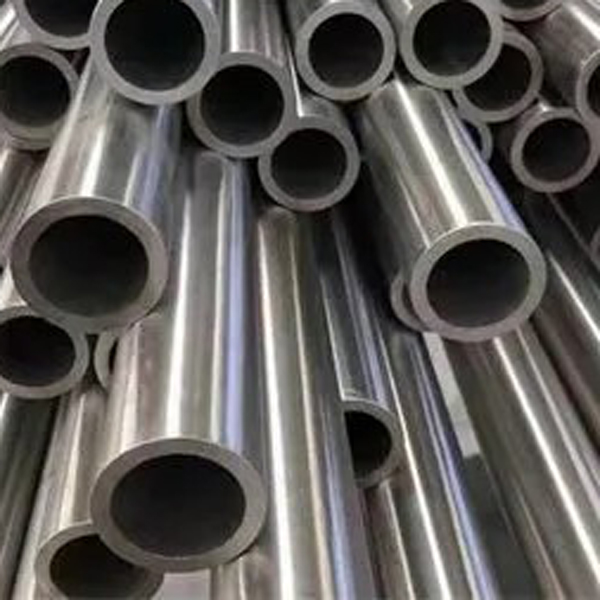Which Stainless Steel Pipe Is Best for Laboratory Gas Systems?
Choosing the right stainless steel pipes for laboratory gas systems is critical to ensure safety, purity, and reliability. Laboratory gas pipelines require exceptional corrosion resistance, high cleanliness, and airtight integrity to handle different gases—from inert and high-purity gases to corrosive or high-pressure ones. Among various grades, 316L stainless steel pipes are recognized as the most reliable and cost-effective choice. Ganyeah Group, a leading stainless steel pipe manufacturer, provides precision-engineered 316L pipes designed to meet the stringent standards of modern laboratories.

316L stainless steel pipes for laboratory gas systems by Ganyeah Group
1. Key Selection Standards for Laboratory Gas Systems
Before choosing the right material, it’s essential to consider the gas type and system parameters:
- Gas Corrosiveness: Corrosive gases (e.g., HCl, H₂S, Cl₂) demand materials with superior pitting and crevice corrosion resistance.
- Gas Purity: High-purity gases (>99.999%) require smooth internal surfaces with minimal adsorption to prevent contamination.
- Operating Pressure: Typical pressure ranges from 0.1 to 10 MPa. The pipe’s wall thickness and strength must match system pressure.
- Compliance: Pipes must comply with laboratory safety codes such as GB/T 20801, ASTM, or ISO standards.
Ganyeah Group ensures that each seamless stainless steel pipe meets both Chinese and international standards, supported by complete material and passivation reports.
2. Material Comparison: 316L vs 304 vs 317L
Below is a detailed comparison of commonly used stainless steel pipes for laboratory gas pipelines:
| Material | Key Alloy Composition | Corrosion Resistance | Cleanliness | Mechanical Strength | Typical Applications | Limitation |
|---|---|---|---|---|---|---|
| 316L | Cr 16–18%, Ni 10–14%, Mo 2–3%, C ≤0.03% | Excellent – resists chloride and acid gases | High – easily polished, low oxide detachment | High | Corrosive and high-purity gases (H₂, O₂, HCl, Ar) | Higher cost, requires TIG welding |
| 304 | Cr 18–20%, Ni 8–11%, C ≤0.08% | Moderate – not ideal for chloride-rich gases | Medium | Moderate | Inert or non-corrosive gases (N₂, NH₃) | Susceptible to chloride corrosion |
| 317L | Cr 18–20%, Ni 11–15%, Mo 3–4%, C ≤0.03% | Superior to 316L | High | High | Highly corrosive gases and acid mist | Very high cost, limited availability |
Conclusion: 316L achieves the best balance of corrosion resistance, cleanliness, and cost—covering over 90% of laboratory gas pipeline applications.
3. Critical Parameters for 316L Stainless Steel Pipe Systems
To ensure compatibility and long-term reliability, Ganyeah Group recommends verifying the following parameters:
- Inner Surface Roughness (Ra): For high-purity gases, Ra ≤0.8μm (mirror-polished); for inert gases, Ra ≤1.6μm.
- Wall Thickness:
- Low pressure (≤0.6 MPa): 1.0–1.5 mm seamless pipe.
- High pressure (>1 MPa): ≥2.0 mm, strength-tested per GB/T 20801.3.
- Welding Method:
Use TIG welding for stainless steel pipes with full argon back-purging to avoid oxide scale inside welds. - Surface Passivation:
Perform passivation treatment of stainless steel pipes (acid or electrochemical) to form a dense Cr₂O₃ layer, improving corrosion resistance and gas purity.
4. Special Material Recommendations
| Scenario | Recommended Material | Additional Notes |
|---|---|---|
| Ultra-high pressure gases (>10 MPa, e.g., helium) | 316L seamless thick-wall pipe (3–5 mm) | Hydrostatic test = 1.5× working pressure |
| Strongly corrosive gases (e.g., fluorine, acid mist) | Hastelloy C-276 | Confirm compatibility with gas supplier |
| Cleanroom or biological labs | 316L sanitary pipe (Ra ≤0.4 μm) | Use Tri-Clamp fittings to prevent microbial buildup |
5. Installation, Inspection, and Maintenance
To guarantee performance and safety, Ganyeah Group advises:
- Qualified Supplier: Select manufacturers with a certified Pressure Pipe Component Production License and full traceability documentation.
- Leak Testing: Perform helium mass spectrometry testing with detection sensitivity of 1×10⁻⁹ Pa·m³/s.
- Regular Maintenance: Every 1–2 years, clean pipelines with high-purity nitrogen and perform ultrasonic thickness inspections for corrosion monitoring.
316L stainless steel pipes for laboratory gas systems remain the most dependable solution, combining corrosion resistance, purity, and mechanical strength. With precise TIG welding, seamless construction, and advanced passivation, Ganyeah Group ensures every pipe meets the rigorous demands of research and industrial laboratories worldwide—ensuring safety, stability, and long service life.
